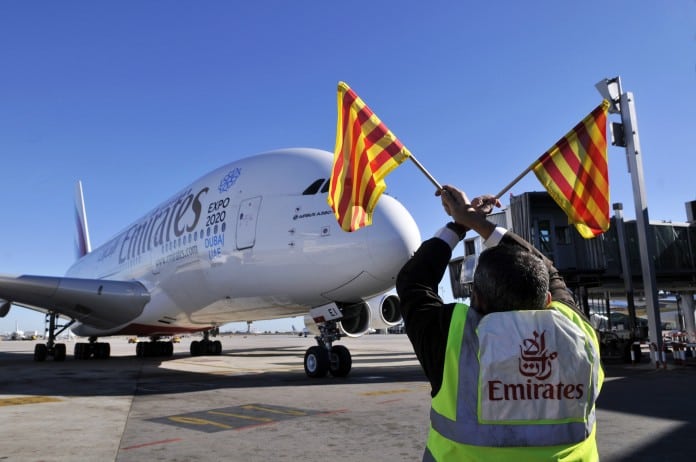
Compared to the same period last year, Dubai International Airport registered an increase in the passenger traffic, cargo volumes and aircraft movement in September. Official data, released today by Dubai Airports shows that passenger traffic jumped by 9.9 percent in September.
According to the latest figures by Dubai Airports, Dubai International handled 5,942,628 passengers last month, which is an increase of 9.9 percent over the 5,407,326 passengers in September 2013. There has been a 6.2 percent rise in passenger traffic since the beginning of the year, as well – from January to September 52,422,547 passengers used the airport, compared to 49,379,165 in the first nine months of 2013. The operator also estimates that there has been an increase in the passenger per aircraft movement of 4.6 percent – from 192.9 in the period last year, to 201.8.
The rise in aircraft movements is slight, at 0.4 percent, also says the press release. From 30,746 in September 2013, they grew to 30,871 in the corresponding month of 2014. However, looking at the total number of aircraft movements from the beginning of the year, there is a dip of 5.6 percent, due to the closure of the two runways, which were refurbished from May to July. During this time, some of the commercial flights, as well as all cargo flights were moved to Maktoum International at Dubai World Central. Despite the drop in freight volumes in May, June, and July, there has been a 2.8 percent increase in cargo tons in September, compared to the same period last year. From 196,823 tons in September 2013, volumes rose to 2020,415 tons last month.
Due to political instability, Russia and the CIS countries within the Russian Commonwealth were the only region not showing positive growth, according to Dubai Airports. Passenger growth was the strongest for destinations in Eastern Europe in September at a rate of 20.3 percent. North America and South America were the other rapidly growing markets, with a rise of passenger numbers of 19.6 and 15.4 percent, respectively. The growth in overall passenger numbers, however was the biggest for the Indian subcontinent (up 148,211 passengers) and Western Europe (111,961 passengers).




































